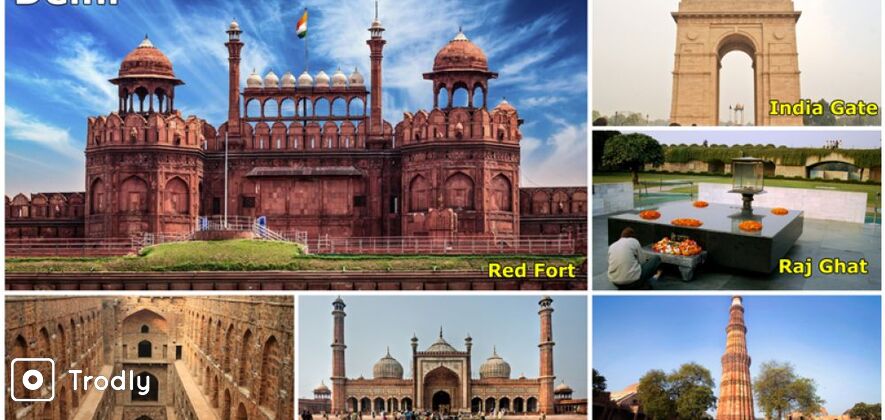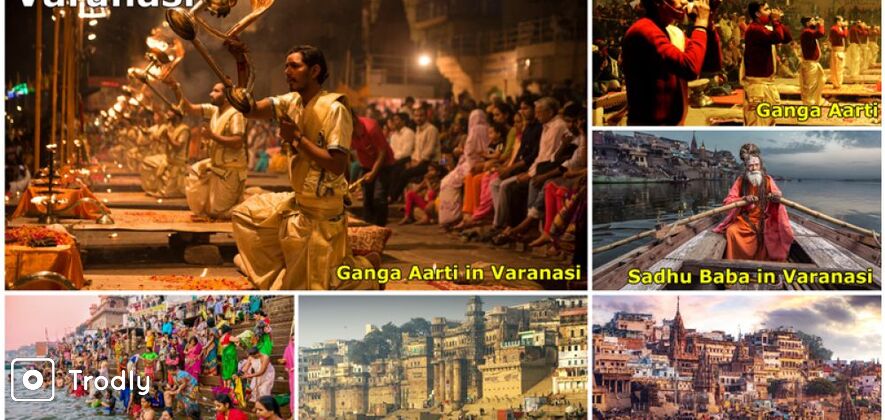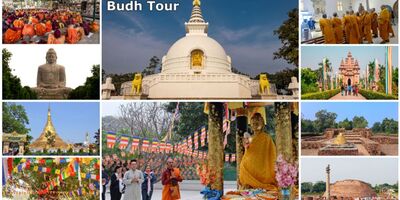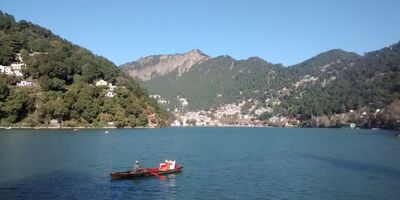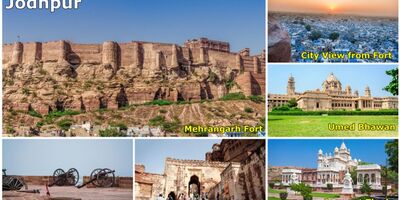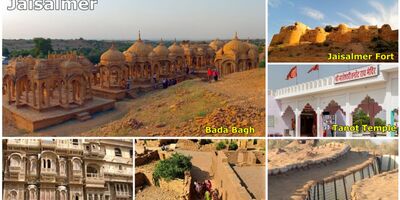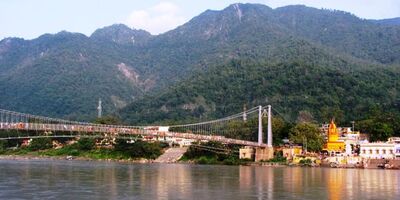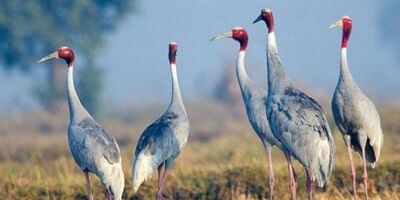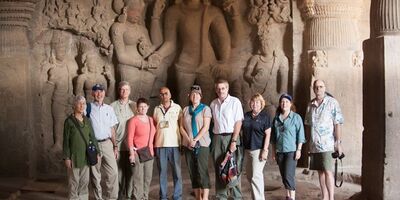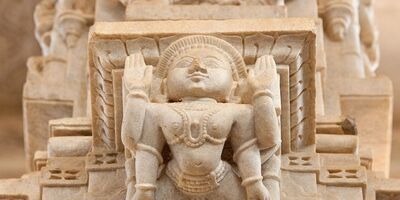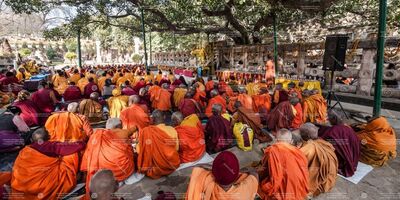Buddhist Tour: 10 Days of Sacred Exploration from Delhi
Trip Overview
Discover the essence of Buddhism on this comprehensive 10-day tour across India. Start in Delhi, then travel to Lucknow and Sravasti, a site of Buddha’s miracles. Continue to Lumbini, the birthplace of Buddha, and Kushinagar, where he attained Nirvana. Visit Kesariya, Vaishali, and Patna, then explore Nalanda, Rajgir, and Bodhgaya, the site of Buddha’s enlightenment. Conclude with visits to Sarnath and Varanasi before returning to Delhi.
Highlights:
- Delhi: Gateway to the Buddhist Circuit.
- Sravasti: Witness to Buddha’s miracles.
- Varanasi: Sacred city in Buddha’s life.
- Lumbini: Birthplace of the Buddha.
- Kushinagar: Buddha’s final Nirvana site.
- Kesariya & Vaishali: Prominent Buddhist landmarks.
- Nalanda & Rajgir: ancient centers of learning.
- Bodhgaya: Enlightenment site of Buddha.
Brief Itinerary:
Day 1 : Arrival Delhi and City Tour
- Arrive at Delhi. Welcome at the airport and transfer to the hotel. We start our tour by first visiting Old Delhi. Board on a rickshaw and enjoy a rickshaw ride through the intricate alleys of Chandni Chowk. After a joyful ride, we stop at Jama Masjid, which is the oldest and one of Asia’s largest mosques. It was built by Shah Jahan in the year 1656. After Jama Masjid, we then visit the majestic Red Fort and then drive past to reach New Delhi through India Gate, the Parliament Building, and Rashtrapati Bhawan.
- Accommodations : Overnight Stay in The IVY Hotel
Day 2 : Delhi-Lucknow (By Train AC) Drive To Sravasti (180 Km, 4 Hours)
- Early morning transfer to railway station to board a train to Lucknow.
- Arrive at Lucknow station and immediately leave for Sravasti, where Buddha delivered many of his important sermons. Sravasti is the most important Buddhist pilgrimage site in the country. Lord Buddha bewildered his sermons with a million-fold expression of himself, seated on a thousand-petaled lotus, as fire and water sprung from his body.
- Accommodations : Overnight Stay in Hotel Sravasti Palace
Day 3 : Sravasti-Lumbini (190 Km, 5 Hours)
- In the morning, visit Saheth in Sravasti. It has a number of Buddhist stupas and monasteries. The main attractions here are two chambers, Gandhakuti and Kosambakuti, which were used by Buddha. Gandhakuti, or fragrant chamber, is the most sacred place, as it was used as a personal chamber by Lord Buddha, and devotees offer a large amount of flowers to the Lord.
- Then drive to Kapilvastu.
- Kapilvastu is one of the most important pilgrimage site for Buddhists. Lord Buddha had spent his childhood and youth in this town. Once the capital of the Shakya kingdom, the place will unfold the story of birth of Buddhist religion. Mystic charm and magic of the village can be felt with spirituality and devotion. The village is sprinkled with many Stupas that were built by Ashoka and Gupta kings.
- Finally, proceed to Lumbini, which is famous in the world for being the sacred site of Lord Buddha’s birth.
- Accommodations : Overnight Stay in Hotel Kapilavastu
Day 4 : Lumbini-Kushinagar (145 Km, 4 ½ Hours)
- Morning visit Maya Devi Temple marks the spot where Queen Maya Devi gave birth to Siddhartha Gautama in around 563 BC. The temple is enclosed by the brick foundations of monasteries and ancient temples. The ground floor of the temple still has remains of the ruins of the ancient Maya Devi Temple dating back to the 3rd century BC. In the adjoining sacred garden, you’ll find the pillar of Ashoka, ancient ruins of stupas, and maroon- and saffron-robed monks congregating under a sprawling Bodhi (pipal) tree decorated with prayer flags.
- There is a sacred pond beside the temple, which is believed to be the birth spot where Maya Devi bathed before giving birth to the Buddha.
- NirvanaLater leave for Kushinagar, which is also a must visit for all Buddhist Pilgrims because it was here that Lord Buddha delivered his last sermon. It was the center of the Mallas dynasty who ruled over the place; however, only few ruins remain today associated with that period. Ashoka the Great had also built many structures in this place where Buddha attained Nirvana.
- Arrive and check in at hotel.
- In the afternoon, visit Nirvana Temple, perched high on a plinth, The temple houses reclining Nirvana statue of Lord Buddha and is made of monolithic red sandstone. The statue is placed over huge brick-pedestal with stone-posts at the four ends. Inscriptions are beautifully engraved on the statue, which dates back to the 5th century.
- Ramabhar Stupa is the cremation site of Lord Buddha and is also called as Mukutbandhan-Chaitya.
- Accommodations : Overnight Stay in Hotel Kushinagar Palace
Day 5 : Kushinagar-Keshariya-Vaishali – Patna (265 Km, 7 Hours)
- In the morning leave for Patna, en route visit Keshariya, which was known as Kesaputta and was dominated by Kalamas, which was later annexed by its monarchical neighbour Kosala. Alara Kalama, the teacher of Buddha before enlightenment, is said to belong to Kesaputta. Buddha is also said to have had a direct connection with Kesaputta.
- According to Jataka Buddha, he ruled this place as a Chakravartin Raja in his previous birth. Similarly, during one of his visits to Kesaputta, Buddha gave one of his most important discourses, the celebrated Kessaputtiya Sutta, popularly known as Kalama Sutta. Kesariya stupa built to honour the place where Buddha spent the last days of his journey before attaining Nirvana.
- Continue drive to visit Vaishali, where the lord Buddha preached his last sermon before his death in Vaishali. It is significantly associated with Buddhism. It is believed that Lord Buddha visited Vaishali many times after he attained enlightenment.
- It was the Capital of one of the first Republican states in entire world. Buddha asked Ananada, his disciple, to assemble all bhikshus (monks) there and told them about his Mahaparinirvana (final departure), advising them to spread Dharma to bring happiness in the world.
- Finally, proceed to Patna.
- Accommodations : Overnight Stay in Hotel Patna Palace
Day 6 : Patna-Nalanda-Rajgir – Bodhgaya (180 Km, 5 Hour)
- Morning leave for Bodhgaya enroute visit Nalanda, which was founded in 5th century B.C. It is one of the world’s oldest living cities. Buddha visited this place number of times. It is most famous for The Nalanda University, which was established in 5th century B.C. The ruins of the university are spread over 14 hectares of land.
- NalandaAll the buildings are made with red bricks built in Kushana style of architecture. The most imposing structure is the Sariputra stupa at the extreme south of the University. There are 9 monasteries. Each monastery was provided one shrine, which contained the colossal image of Buddha. Also visit Museum here, which possesses the treasure antiquities found during the excavations in Nalanda and Rajgir.
- Continue drive to visit Rajgir, which was once the ancient capital of the Magadha Kings. Buddha often visited this place, seeking the solitude and tranquillity of the Jivkamaravana monastery and preaching and meditating at the Griddhakuta hill (hill of vultures). It was also here that his teachings were written down for the very first time. Visit Venture’s peak, where Lord Buddha set in motion His second wheel of law and preached sermons to his disciples for three months in the rainy season. The peak also houses a massive modern Stupa, the Shanti Stupa, built by the Buddhist Sangha of Japan.
- Finally, proceed to Bhagaya. The city of Bodhgaya witnessed the turning point in the life of Prince Siddhartha. From a wandering ascetic, here he attained supreme knowledge or enlightenment. Bodhgaya is the place where Buddha began his journey to spread the message of peace and nirvana. Bodh Gaya is considered the most important pilgrimage for all sects of Buddhists throughout the world.
- Accommodations : Overnight Stay in Hotel Bodhgaya Inn
Day 7 : Bhagaya
- full day is dedicated to visit of Bodhgaya. Visit Mahabodhi Temple, which is believed to have been built by Great Ashoka, who visited this site 250 years after the enlightenment of Buddha. The Temple was rebuilt in 7th century A.D. and it has a long history that has seen periods of invasions and destruction. Muslim invaders destroyed the temple in the 12th century but the Burmese kings restored it in the 14th century. However, the temple complex was severely flooded and remained buried under silt till 1811. The temple finally received its last and massive restoration and conservation work after it was excavated in 1861.
- The main attraction of the temple is Bodhi Tree, under which Buddha spent one week after enlightenment. The Tree is considered to be among the oldest and most venerated tree in the world. The present tree is considered only as the descendant of the original tree. Daughter of Ashoka, Bhikkhuni Sangamitta, took a shoot of the original Bodhi tree to Sri Lanka in the 3rd century B.C., where the Lankan king Devanampiya Tissa planted it at the Mahavihara monastery in Anuradhapura, where it still flourishes today.
- Besides the ancient remains, there are temples or monasteries built by other Buddhist countries like Thailand, China, Sri Lanka, Japan, Korea, Nepal, Taiwan, Bhutan, etc.
- Accommodations : Overnight Stay in Hotel Bodhgaya Inn
Day 8 : Bodhgaya – Sarnath – Varanasi (250 Km, 6 Hours)
- In the morning, leave for Varanasi with stop en-route at Sarnath, one of the four most important Buddhist pilgrimage destinations in India. Visit Dhamekh Stupa, which is the most wonderful and massive structure at Sarnath. Built partly in brick and partly in stone, the Dhamekh Stupa is 28 meter in diameter at the base and 43.6 meters in height.
- Dhamekh StupaThe Stupa has a specific significance at Sarnath as it signifies the place where Buddha delivered his first sermon after he attained enlightenment at Bodh Gaya. Here he preached his first discourse to his five former companions. This event is described in Buddhist texts as dharmachakra-pravartana, meaning the turning of the Wheel of Law. The Buddha taught them all that he had learned and thus they also became enlightened. This marked the foundation of the first Buddhist Sangha or the community of monks. The name Dhamekh proves that it certainly has some linkage with Buddha’s Dharma. It is believed that the Stupa was built by Ashoka on the spot where Buddha set in motion the wheel of law.
- Finally, proceed to Varanasi, It is the oldest living city of the world and is famous as the city of temples. Varanasi or Kashi, as it is popularly known, is the most important place of pilgrimage for Hindus and the sight of devoutly praying standing water deep in Ganges. Buddha had reached here after he attained Nirvana to look for five Hindus Ascetics who he had met earlier before enlightenment and who had insisted that the only path to salvation was through self-mortification. Buddha gave them the precious gift of spiritual knowledge; thus, they became his followers and the first members of the Sangha.
- Accommodations : Overnight Stay in Hotel Alka
Day 9 : Varanasi-Delhi
- Early morning start tour of Varanasi, commonly known as the cultural and spiritual capital of India, is one of the oldest inhabited cities of the country. Since bygone era, the city has proudly carried the legacy of the rich tradition and culture of India. The city has been an important pilgrimage site for Hindu mythology. City of lights, as popularly known, is famous for its enigmatic Ghats.
- The mythological legacy and aura around this city are quite awe-inspiring. boat tour on the Ganges is the best way to visit Bathing Ghats. We explore Ghats to witness the live rituals of the world’s most important religion. Sailing on the holy waters of Ganga, enjoy the sight of sunrise and at the background you will experience thousands of pilgrims worshipping sunrise and having a bath in the holy water.
- Return to hotel for breakfast. And later transfer to airport to catch flight for Delhi. Upon arrival at Delhi airport, transfer to hotel for overnight stay.
- Accommodations : Overnight Stay in The IVY Hotel
Day 10 : End of the tour
- In the morning, transfer to the airport to catch a flight to your onward destination.
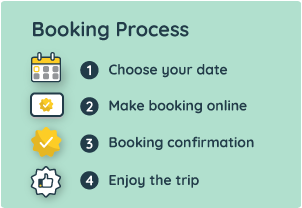
Basic Details
Inclusions
- Breakfast.
- Private Air Condition Transport.
- Airconditioned seats in railway transfers
- Private AC rooms
- Sightseeing Tours.
- Hotel Accommodation.
- Toll Tax, Parking & Fuel, etc.
- Pick-up & Drop-off.
Exclusions
- Lunch & Dinner
- Any type of monuments entry charges
- Any type of drinks or beverage
- Any type of personal Expenses
- Any type of flight ticket is not included.
- Nepal Visa Charge is not included.
Why book with TRODLY
- Best Price Guarantee
- Verified customer reviews that help you make the right decision.
- Qualified operators. All partner operators selected after rigorous system of checks.
- Free Cancellation on Most Trips
- Only Best Trips - Our team of travel experts bring uniquely local, safe, and exciting experiences to the community.
- 100% Secured Payments
₹ 51500 Per Person

Get trip inspirations, offers and more.

